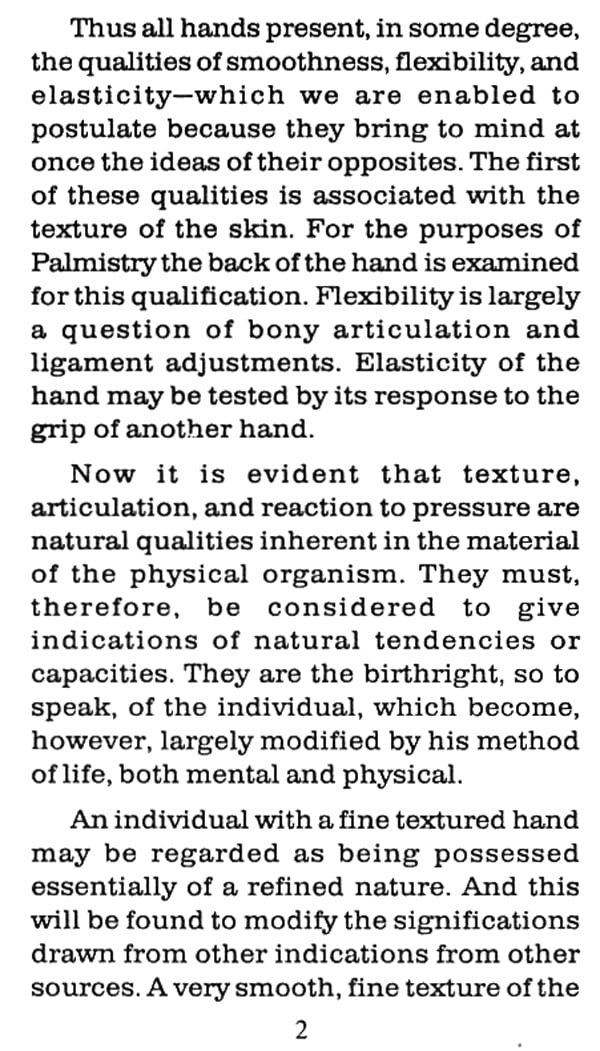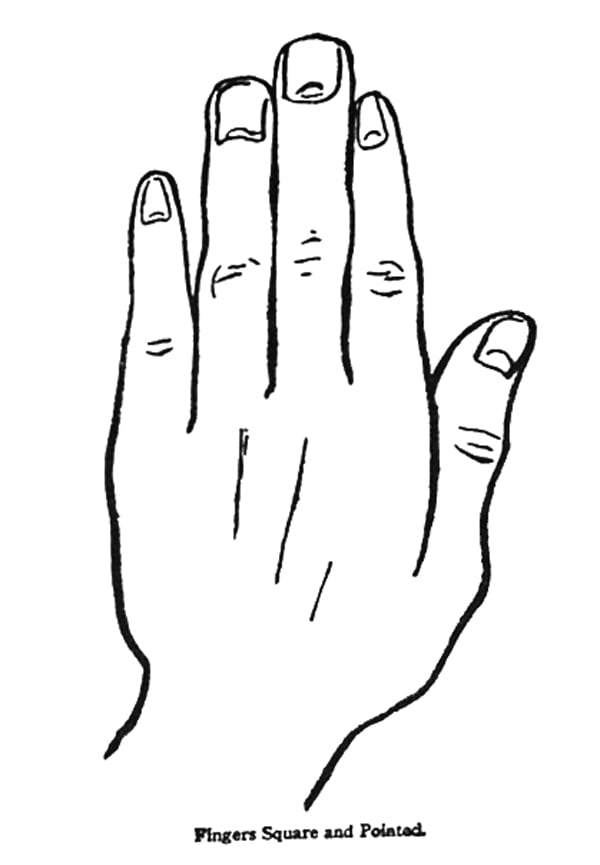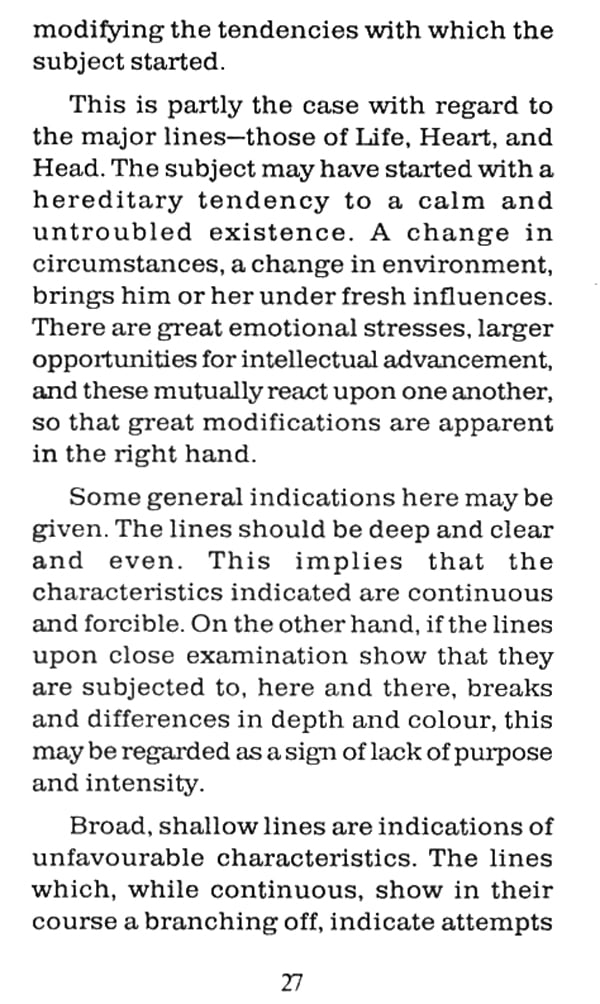
Palmistry Simply Explained
Book Specification
| Item Code: | NAX622 |
| Author: | James Ward |
| Publisher: | 0---------PILGRIMS PUBLISHING VARAN_01 |
| Language: | English |
| Edition: | 2004 |
| ISBN: | 9788177690484 |
| Pages: | 62 (Throughout B/W Illustrations) |
| Cover: | PAPERBACK |
| Other Details | 6.00 X 4.00 inch |
| Weight | 50 gm |
Book Description
palmistry, which appears to the intellectual as a piece of clever chicanery by which fools are soon parted from their money, is in fact not just an art but also a science. For thousands of years mystics and occultists have experimented with the lines that appear on our hands until now we have a pretty precise understanding of their meaning and on the basis of this knowledge are able to make predictions which surprise the most cynical of its detractors. It is also true that the hands themselves indicate a person's background and the type of work that they do. The hard skinned or calloused hands of a laborer, or the soft and well-shaped hands of a violinist are the most obvious examples.
Palmistry has through the ages played a great role in the decisions of state made by many rulers throughout the world. It has not been restricted to those countries of the Orient famed for their deep interest and knowledge of occult arts but has found popularity in the courts of Europe and later on in the New World where the indigenous races had practiced many mystical arts and had developed a great understanding of astrology thousands of years before the coming of the colonizers.
Man has always been fascinated with the question of his future and the portents of his demise. He has always resorted to enquiring of oracles and soothsayers to discover what might lie in store for him. Throughout history we have regularly come across references to such devices employed by the majority of statesmen and their lieges in making decisions, which have turned the course of history. Even in modern times this practice continues unabated.
This leads the most cynical amongst us to reconsider our thoughts and opinions related to this science. Once one begins to read more of this subject it becomes clear that much thought and research has gone into compiling the theories, which abound regarding it.
Ward in his book has, in simplified explanations made a great deal of knowledge available to those of us who are interested to learn more about the art. Very lucidly and succinctly he has laid out the premises of this science and made them available to the student and the adept, so that they may improve their inter-pretations of the palms of various subjects.
The author does not claim to have presented a complete manual of palmistry but says, "...within the limits of the space available it is hoped that a fair presentation of the case for the significance of the art has been made, and that the reader will be able to obtain enough detail to read his own palm and perhaps get a little enjoyment out of his endeavors to read the palms of such of his friends who will submit to his pretensions." He does admit that the detractors of this art are perfectly convinced that, for example, there can be nothing in clairvoyance, telepathy and psychometry. He qualifies this by also pointing out that this is most probably due to the fact that nothing readymade regarding these subjects has actually fallen into their hands. Thus having to rely only on the hearsay available to them, they are more likely to shrug their shoulders and opine that their original feelings were correct.
It may come as a surprise to some persons that there are quite a number of large books on the subject of Palmistry. These are devoted to an analysis of its principles, and then to the practical application of these principles by way of illustration. To the authors and publishers of some of these volumes the present writer would here offer his acknowledgements for suggestion in mode of treatment and in a lesser degree for material.
Mrs. Robinson's volume, "The Graven Palm," published by Edward Arnold, is one of these. Cheiro's "Language of the Hand," and "Palmistry for All," published by Herbert Jenkins, are others. Mention must also be made of the large volume, with 800 illustrations, by W.G. Benham, "The Laws of Scientific Hand Reading." Many years patient investigation is embodied in this book and the subject is treated most exhaustively. Each of these books may be recommended to those who desire a more detailed treatment of the subject than could possibly be given in a little volume.
But within the limits of the space available it is hoped that a fair presentation of the case for the significance of the art has been made, and that the reader will be able to obtain enough detail to read his own palm and perhaps get a little enjoyment out of his endeavours to read the palms of such of his friends who will submit to his pretensions.
**Sample Pages**










